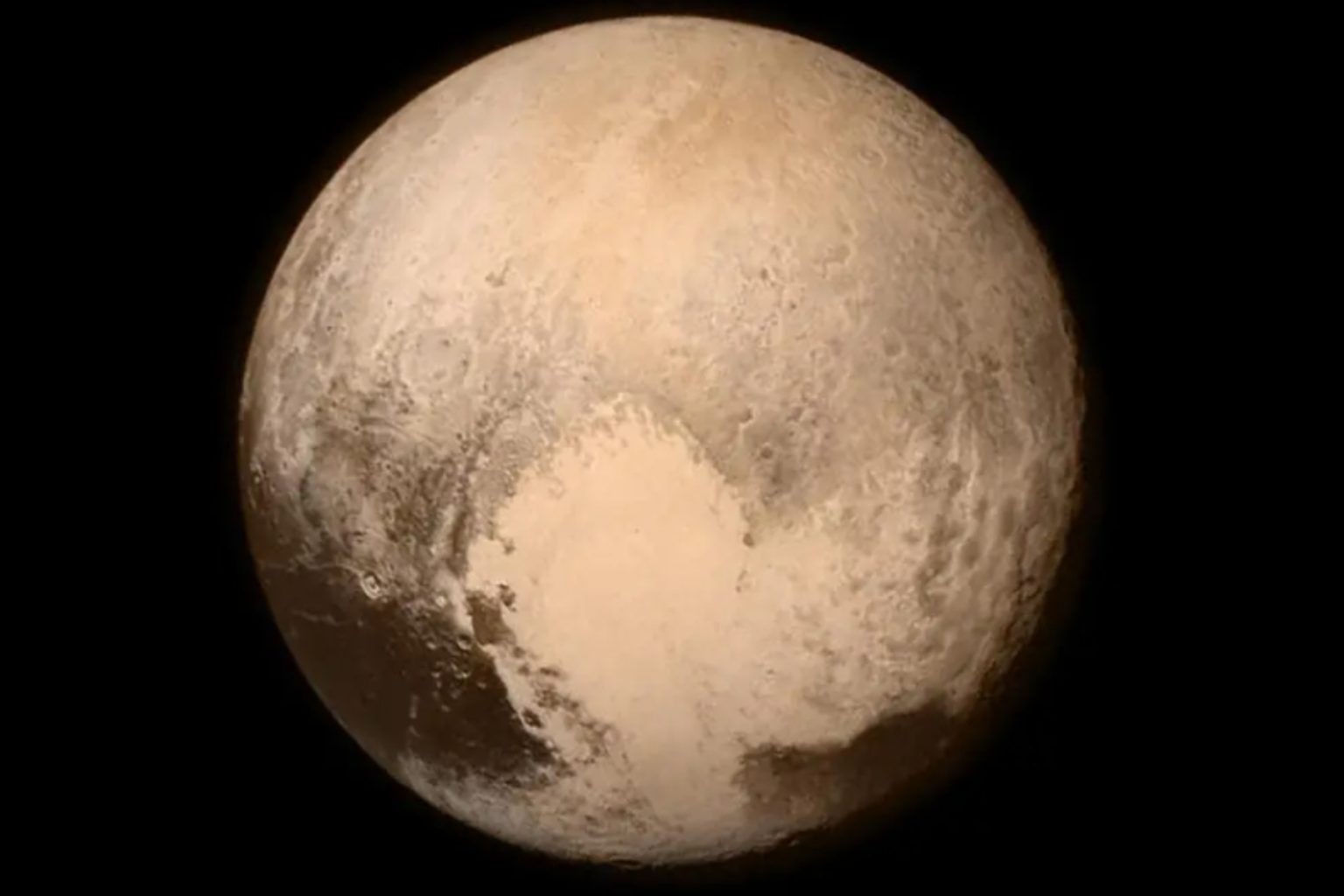Researchers have discovered that Pluto’s characteristic heart-shaped feature, Tombaugh Regio, was likely formed by an ancient impact. The region, first seen in detail during the New Horizons flyby in 2015, has intrigued scientists due to its unusual shape and geological makeup. Named after astronomer Clyde Tombaugh, who discovered Pluto in 1930, Tombaugh Regio spans about 1,000 miles across and consists of a western lobe called Sputnik Planitia. This area is lower in altitude than its surroundings and is covered in nitrogen, carbon monoxide, and methane ice, giving it a bright appearance.
The researchers believe that Sputnik Planitia was created after a massive collision with a celestial body approximately 435 miles across, at a slanted impact angle. Using simulations, they were able to validate their theory and identify the likely composition of the impacting object. The slow impact speed and strange angle led to the formation of the heart shape of the region, as a faster and more direct impact would have resulted in a symmetrical crater. This discovery sheds light on Pluto’s internal composition and suggests that the absence of a subsurface ocean may explain the location of Sputnik Planitia near the equator of the planet.
Pluto’s core is believed to be so cold that the rocks remained hard and did not melt during the impact. The impactor’s core material splattered onto Pluto’s core, creating a local mass excess that could explain the migration towards the equator. This new theory challenges previous assumptions about Pluto’s internal structure and the presence of a subsurface ocean. While it had been speculated that Pluto may have had a liquid water ocean beneath its surface, the new findings suggest that the formation of Sputnik Planitia was a result of an impact event.
The researchers used Smoothed Particle Hydrodynamics (SPH) simulation software to digitally recreate collisions with Pluto and adjust different variables to test their theories. These simulations showed that the elongated shape of Sputnik Planitia indicates an oblique impact rather than a direct head-on collision. The research team believes that somewhere beneath Sputnik is the remnants of another massive body that never fully integrated with Pluto, leading to the unique shape of the impact region.
Overall, the discovery of the formation of Tombaugh Regio sheds new light on Pluto’s history and geological features. By studying the impact event that created the heart-shaped feature, scientists can better understand the processes that have shaped the dwarf planet over billions of years. Further research into Pluto’s composition and history may help unlock more mysteries about this distant world and provide insights into the broader evolution of our solar system.


